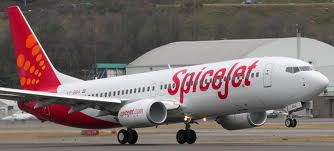Mumbai, Aug 13: The Union civil aviation ministry's decision to permit unbundling of services earlier this year has got carriers trying out ever newer ideas. SpiceJet on Monday became the first airline in India to offer passengers the option of paying extra to get a chance to secure empty seats next to theirs.
Called Empty Seat Option or ESo, the facility is on offer on SpiceJet's domestic flights and subject to availability. The way it will work is this: if there are vacant seats on a flight, the flyers who have availed of ESo will get preference in sitting next to them. In flights with no empty seats, the option does not hold; and in flights with too many of them, even passengers who have not paid for ESo could be lucky and get to sit adjacent to an unoccupied seat.
SpiceJet was not clear on Monday about the cost of ESo. The feature's booking is being handled by a website called Option Town, which manages the option for several foreign low-cost airlines, such as Air Asia, Vietnam Airlines, Estonian Air and firefly. According to this site, the cost of ESo on SpiceJet starts from Rs 250.
Although the SpiceJet website said that flyers will get confirmation of vacant adjacent seats about 24 hours before departure, the assurance's feasibility remained to be seen. The carrier, however, is clear that passengers paying for ESo will be governed by the rules and regulations of Option Town—which raised questions on where responsibility would lie in the appearance of a conflict. For instance, when a passenger paid for ESo, got a confirmation, but later learnt that the facility will not be granted because the flight got filled. The SpiceJet spokesperson was not available for comment.
With the empty seat option airlines in India have tapped yet another opportunity to charge for a service that was earlier provided free and thereby increase their ancillary revenues. Aviation consultancy firm Centre for Asia Pacific Aviation has estimated that airlines in India would annually earn $500 million in ancillary revenue.





Comments
Add new comment